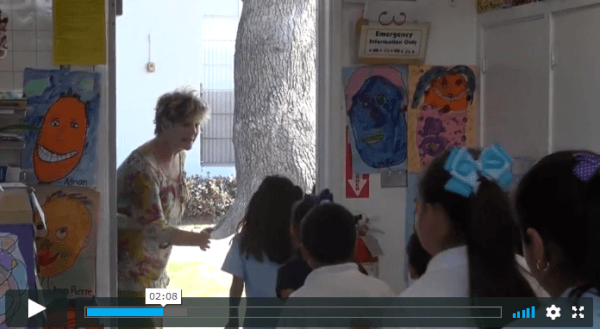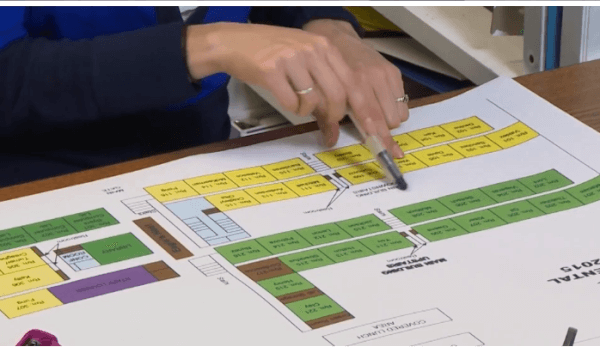Escape From Danger in the Classroom

Get this video at the link below
Prologue:
If you don’t find time to read this entire Advisory, please take the time to note and to WATCH one or all of the three videos at this school site. Here’s the link
https://www.sausd.us/Page/34190
Each video is on how to respond to an active shooter event in school. One of the videos is for elementary school classes, one for intermediate, one for high school. Each video is about 11 minutes long.
As a teacher, parent, and even as a student, you will find these videos valuable. They were made by the Santa Ana Unified School District (CA). They will give you a basic understanding of what you can do that may save lives.
Strong emotional reaction to a disaster
We’ve found that it’s usually pretty easy to talk or write about preparing for a natural disaster. After all, while ice storms or floods may be dangerous, they aren’t usually associated with evil or diabolic intent.
Of course, when the storm hits, people may experience fear. But preparation can help them get past that fear and start taking actions they know make sense.
When it comes to human-caused violence, or terrorism, though, like what happened on Valentine’s Day in Florida, people react differently. When we think of a person “out to get us,” we may feel fear, but we may also respond with violent anger – at the terrorist, at the terrorist’s family or tribe, at the police or military who are supposed to protect us.
Any of these emotions may help us get past the denial, the shock and numbness that also may accompany the disaster – but what then?
My own emotions have made me address this issue today.
Rather than rage helplessly, I want to share some ways to channel emotions for my own health and perhaps to help others. It comes down to being prepared with a plan.
Having a PLAN can channel emotions and save your life
This week we’ve seen a terrifying example of a terrorist action – the mass shooting of high school students and teachers in Florida. Thanks to on-the-scene video coverage we’ve seen fear – and horror.
Those early student videos also showed how emergency planning and practice saved lives at that school.
Law enforcement’s plan for an Active Shooter
Over the past few years police tactics for handling active shooters have changed. A dozen years ago, police called to a shooter event waited for reinforcements and collected all the facts of the situation before coming up with their plan.
But, since most active shooter evens are over in less than 7 minutes, waiting “to make a plan” makes no sense.
So today, the role of the police is a lot simpler. The first officers to arrive find, engage and stop the shooter as quickly as possible.
The school’s plan for an Active Shooter
In Florida, we also saw that students and teachers knew how to react. And while some students were killed before the plan could be fully activated, many were able to take the actions they had practiced, and save their lives.
I wanted to know what the situation is here in my own town.
Results of my informal quiz
Over the past few days I’ve quizzed several neighborhood children about the drills they have in their schools.
- The first graders were very vague. Yes, there were drills. With the exception of fire drills, the children were not sure what the drills were for.
- Middle school children were more definitive. Yes, they said, they had drills. Some enumerated fire drills, earthquake drills, and “lockdown drills,” but some didn’t distinguish. None of the children recognized the expression “active shooter.” They didn’t recognize the expression “Code Red.”
- High school students – who had actually been locked down three months ago in a potential crime situation at their school – were pretty knowledgeable. They knew about Florida and active shooter was certainly in their vocabulary.
“Closing up the room and keeping away from the windows” didn’t seem adequate to me, though, and that’s what took me to the internet for my research.
Results of my research – the Santa Ana Unified School District videos
I viewed a dozen videos and found the Santa Ana videos to be best.
They build on the traditional Run, Hide, Fight training that has been around since around 2012.
The videos are specific. They start by recommending that teachers do a thorough assessment of the classroom and school in order to:

- Map out multiple escape routes, including breaking out windows and ways to get out of a second story.
- Identify hiding places and ways to construct barricades.
- Suggest how everyday classroom objects can be turned into weapons if fighting is the only alternative.
Most important, the videos SHOW kids and teachers in action in a realistic setting.
And my recommendations
If you have children in school, I have some recommendations.
- WATCH the videos yourself so you can discuss with your kids. Here’s the link again: https://www.sausd.us/Page/34190
- Quiz your children about the “drills” they have at school. If they are vague, dig deeper.
- Find out from the school administration what drills are held, what training teachers receive, how often, etc.
Without getting into the politics of gun ownership, it is clear that with the MILLIONS of assault rifles in this country, not to mention handguns and other rifles, an active shooter event could happen at any time. There have been 35 mass shooting events so far this year alone! (defined as 4 or more people wounded or killed)
Your children deserve the best training you can give them.
Virginia
Your Emergency Plan Guide Team
P.S. Since we’re on the topic of emotions vs. logic, I have to say that if having more guns would make us safer, we would ALREADY be the safest country in the world since we have by far the most guns.
Don't miss a single Advisory.
Thank you for subscribing.
Something went wrong.

Your “active shooter” article was mostly great, skirting hot-button political issues and giving sound advice on what students can do, given the current environment.
But then you concluded the article by tipping your hand regarding your own political opinion. I understand your opinion and respect it, but ending the article with it may have evaporated the article’s credibility to a good portion of your readers.
I know it’s difficult to not “preach” while you have people’s attention, but if your real goal is to disseminate these useful guidelines, you’d keep politics out of it.
Respectfully,
Mike
Thanks for your comment, Mike. And I agree, my PS did tip my hand, at least a bit. You can be assured that I considered it carefully before adding it. I do volunteer work in the schools (where I got my informal quiz responses) and it’s hard to be entirely neutral on this topic. I DO hope the videos stand for themselves. Virginia